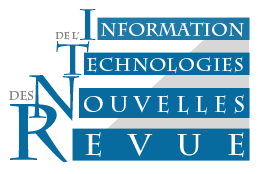Expérimentations autour des architectures d'apprentissage par transfert pour l'extraction de relations biomédicales
In EGC 2021, vol. RNTI-E-37, pp.95-106
Abstract
Relation extraction (RE) consists in identifying and structuring automatically relations of interest
from texts. Recently, BERT improved the top performances for several NLP tasks, including RE. However,
the best way to use BERT, within a machine learning architecture, and within a transfer learning
strategy is still an open question since it is highly dependent on each specific task and domain. Here,
we explore various BERT-based architectures and transfer learning strategies (i.e., frozen or fine-tuned)
for the task of biomedical RE on two corpora. Among tested architectures and strategies, our *BERTsegMCNN
with fine-tuning reaches performances higher than the state-of-the-art on the two corpora
(1.73 % and 32.77 % absolute improvement on ChemProt and PGxCorpus corpora respectively). More
generally, our experiments illustrate the expected interest of fine-tuning with BERT, but also the unexplored
advantage of using structural information (with sentence segmentation), in addition to the context
classically leveraged by BERT.

